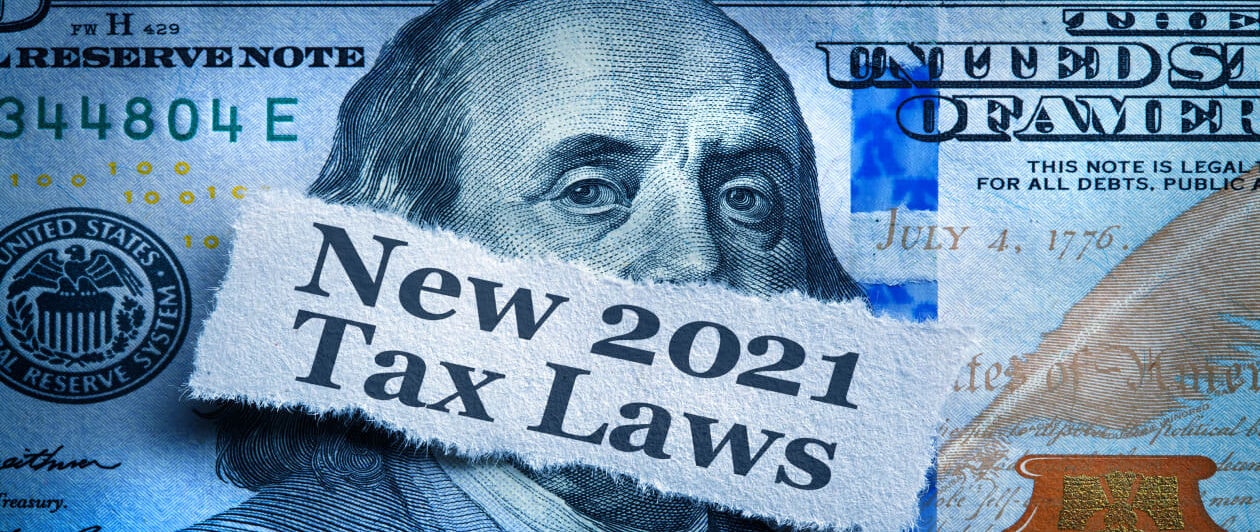

The passing of the CARES Act created another incentive for businesses to keep employees on their payroll – the Employee Retention Credit (ERC). This tax credit applies to businesses whose operations have been impacted by government executive orders or are experiencing a remarkable decline in revenue.
The Consolidated Appropriations Act, 2021 (CAA) – passed in December 2020 – increases the credit amount and allows businesses to reap the benefits of both this credit and PPP loans. Some changes are retroactive to the passing of the CARES Act in March 2020, including:
Then, the American Rescue Plan Act of 2021 – enacted in March 2021 – extends the credit from June 30, 2021, to Dec. 31, 2021. If you qualify for the Employee Retention Credit, it’ll bring instant cash relief, and the credit amounts may be large. Here’s what you need to know.
It’s a fully refundable tax credit for a percentage of the qualified wages you pay employees. It’s applied to your federal payroll tax liability. Any excess credit amount is refundable.
Businesses and tax-exempt organizations operating in any calendar quarter of 2020 or 2021 can claim this credit. However, they must have:
Governmental employers and self-employed individuals aren’t eligible for this credit.
For 2020, the Employee Retention Credit is 50% of all qualified wages you paid employees between March 12, 2020, and Dec. 31, 2020. It’s limited to $10,000 in wages per employee for all quarters. Therefore, you could claim a maximum credit of $5,000 for each employee.
For 2021, the credit is 70%of all qualified wages you pay employees from Jan. 1, 2021, through Dec. 31, 2021. It’s limited to $10,000 in wages per employee for any quarter. Therefore, you can claim $7,000 for each employee in every quarter. The maximum credit is $28,000 per employee.
If your organization is considered a recovery startup business, your total credit is limited to $50,000 per calendar quarter. Recovery startup businesses are those that began operations after Feb. 15, 2020, with average annual gross receipts under $1 million.
Generally, qualified wages are compensation you pay to employees, including qualified health plan expenses. But, the definition also depends on your average number of full-time employees in 2019. If your business wasn’t in existence in 2019, you’ll use the average number of full-time employees in 2020.
If you continue to provide health care benefits to employees who aren’t working, those benefits may be qualified wages. Determining the amount of health care benefits allocable to each employee depends on whether you’re fully insured, self-insured, or a combination of the two. If group health care costs are your only expenses that qualify for this credit, work with a tax professional to correctly calculate and maximize your credit amount.
Now, if you’re considered a severely financially distressed employer, you may treat all wages paid during the third and fourth quarters of 2021 as qualified wages. A severely financially distressed employer is an eligible employer that experiences a decline in gross receipts of more than 90% compared to the same 2019 calendar quarter.
1. If your average was more than 100 full-time employees in 2019, qualified wages are the wages you paid to employees who aren’t providing services because of:
If you fall within this category, the qualified wages can’t exceed what you would have paid the employee for an equivalent duration during the 30 days preceding your economic hardship.
2. If your average was fewer than 100 full-time employees in 2019, qualified wages are the wages you paid to any employee because of:
If you fall within this category, qualified wages aren’t impacted by whether an employee is or isn’t working. Any employee you continue to pay affects your credit amount.
1. If your average was more than 500 full-time employees in 2019, qualified wages are the wages you paid to employees who aren’t providing services because of:
2. If your average was fewer than 500 full-time employees in 2019, qualified wages are the wages you paid to any employee because of:
If you’re a small employer, all wages you pay during an eligible period qualify for the ERC. If you’re a large employer and you don’t pay any employees for not working during 2020 or 2021, you’re not eligible for this credit. But, if you pay employees for working and not working, the wages you pay employees for not working qualify for this credit.
Example: Toys Inc. is a large employer and it paid Ted for 40 hours in February 2021. He worked 10 hours and didn’t work 30 hours. In this case, you’d exclude any wages you paid Ted for working when calculating the credit. Only the wages you paid him for not working (30 hours) are qualified wages and eligible for this credit.
| Large Employer | Small Employer | |
| 2020 Credit | More than 100 full-time employees in 2019 | Fewer than 100 full-time employees in 2019 |
| 2021 Credit | More than 500 full-time employees in 2019 | Fewer than 500 full-time employees in 2019 |
A full-time employee is an individual who’s employed at least 30 hours per week or 130 hours per month (on average). Full-time status is based on hours worked in 2019.
You calculate the credit based on qualified wages you pay your employees each quarter. Here are some examples.
2021 Credit
2020 Credit
In 2020, the significant decline is a 50% decrease in gross receipts compared to the same calendar quarter in 2019. The significant decline ends with the first 2020 calendar quarter where your gross receipts are greater than 80% of gross receipts for the same calendar quarter in 2019.
In 2021, the significant decline is a 20% decrease in gross receipts compared to the same quarter in 2019. A safe harbor is available for Q1 2021 that allows you to use the previous quarter’s gross receipts compared to the same quarter in 2019. For example, in Q1 2021, you can compare gross receipts for Q1 2021 to Q1 2019 or compare gross receipts for Q4 2020 to Q4 2019.
Gross receipts are your total revenue without subtracting returns or discounts, operating expenses, or unpaid invoices. It’s strictly the total amount of revenue your business collects in a tax year. You must calculate your gross receipts using the same basis you use for tax purposes.
Example: You have $250,000 in gross receipts in Q1 2019. In Q1 2021, your gross receipts are $100,000. That’s more than a 20% decrease and marks the start of a significant decline. In Q2 2019, your gross receipts were $200,000. In Q2 2021, your gross receipts are $150,000. Your gross receipts have decreased by more than 20%, so you can claim the ERC for Q1 and Q2 2021.
You’ll report your qualified wages and related credits for each calendar quarter of your federal employment tax returns via Form 941, Employer’s Quarterly Federal Tax Return. You use Form 941 to report income, social security, and Medicare taxes you withhold from employee wages and your portion of social security and Medicare tax.
The CAA includes language that would allow taxpayers to claim retroactive 2020 tax credits on Form 941 for Q4 2020. However, the IRS hasn’t released additional guidance or amended the form to allow this.
If you expect to receive this credit, you can pay employees by reducing your federal employment tax deposits. If you go this route, you won’t be subject to a deposit penalty. Or, you can request an advance payment of the credits to help pay your employees. To request an advance, file Form 7200 with the IRS.
You can claim both the Employee Retention Credit and the tax credit for providing paid leave because of Covid-19. However, you can’t claim both credits for the same wages. And, you can’t include the paid leave wages in your calculation of qualified wages for the ERC. Keep them separate.
If you receive a restaurant revitalization fund grant or a shuttered venues operator grant, the wages you pay with the grant funds can’t be used to claim the ERC. However, you can use restaurant grant funds until 2023 and pay business expenses beyond payroll costs. It’s highly likely that you could claim the ERC and maximize a restaurant grant.
If you received a PPP loan, you can now claim the Employee Retention Credit too. When the CARES Act first passed, you had to choose between this credit and a PPP loan. If you apply for forgiveness of your PPP loan and it’s approved, you can’t claim this credit for wages you paid with your PPP loan. If your forgiveness request isn’t granted, you can use wages paid with your PPP loan to claim the ERC.
The IRS released Notice 2021-20 on March 1, 2021, to address some outstanding questions about how PPP loans and the Employee Retention Credit affect each other. Here are two common questions and the answers.
Q: If I reported more wages on my PPP forgiveness application than was necessary to reach 100% forgiveness of the loan, can I use those excess wages to claim the Employee Retention Credit?
A: Yes. The IRS allows excess wages reported on a PPP loan forgiveness application to qualify for the ERC. In general, wages that make up the PPP’s 60% payroll requirement aren’t eligible for the ERC. Wages that exceed the 60% payroll requirement may be eligible for the ERC, but some analysis is required.
Wages that aren’t included in your PPP loan amount are eligible for this credit if they meet the definition of qualified wages. For example, compensation paid to employees that exceeds $100,000 annually isn’t an eligible PPP payroll cost. But, it could qualify for the ERC.
Q: Can I revise my PPP loan forgiveness application to include more nonpayroll expenses? I want to put all possible payroll costs toward increasing my ERC amount.
A: No. There’s no way to amend a PPP forgiveness application that you’ve already submitted. But, it’s important to think strategically when completing your PPP forgiveness application. PPP loans and ERC have a lot of interplay, so you’ll want to do all you can to maximize the benefits of both relief options.
View more frequently asked questions about the Employee Retention Credit here. If you have any questions about this credit, need assistance claiming it, or want to know how it coordinates with other coronavirus relief measures, we can help.
Have questions about the Employee Retention Credit? Let’s talk!





Even in a normal year, there may be small changes in the ways that people file their taxes. But the COVID-19 pandemic has caused the tax code to change more than usual this year. For this reason, there are several tax law changes in 2021 that taxpayers should know about.

Investing in payroll services takes the stress out of keeping up with these changes. Having a tax and accounting professional take responsibility for ever-changing rules guarantees nothing goes overlooked.

Reasons To Outsource Payroll · Consider the Cost of Your Time · Payroll Taxes Are Complicated · Tax Laws Change All the Time. Read more.

If you are a small business owner looking for tips to being efficient, read to learn about the top 5 tasks that should be outsourced.
Windroot Business Services
We firmly believe that the internet should be available and accessible to anyone, and are committed to providing a website that is accessible to the widest possible audience, regardless of circumstance and ability.
To fulfill this, we aim to adhere as strictly as possible to the World Wide Web Consortium’s (W3C) Web Content Accessibility Guidelines 2.1 (WCAG 2.1) at the AA level. These guidelines explain how to make web content accessible to people with a wide array of disabilities. Complying with those guidelines helps us ensure that the website is accessible to all people: blind people, people with motor impairments, visual impairment, cognitive disabilities, and more.
This website utilizes various technologies that are meant to make it as accessible as possible at all times. We utilize an accessibility interface that allows persons with specific disabilities to adjust the website’s UI (user interface) and design it to their personal needs.
Additionally, the website utilizes an AI-based application that runs in the background and optimizes its accessibility level constantly. This application remediates the website’s HTML, adapts Its functionality and behavior for screen-readers used by the blind users, and for keyboard functions used by individuals with motor impairments.
If you’ve found a malfunction or have ideas for improvement, we’ll be happy to hear from you. You can reach out to the website’s operators by using the following email
Our website implements the ARIA attributes (Accessible Rich Internet Applications) technique, alongside various different behavioral changes, to ensure blind users visiting with screen-readers are able to read, comprehend, and enjoy the website’s functions. As soon as a user with a screen-reader enters your site, they immediately receive a prompt to enter the Screen-Reader Profile so they can browse and operate your site effectively. Here’s how our website covers some of the most important screen-reader requirements, alongside console screenshots of code examples:
Screen-reader optimization: we run a background process that learns the website’s components from top to bottom, to ensure ongoing compliance even when updating the website. In this process, we provide screen-readers with meaningful data using the ARIA set of attributes. For example, we provide accurate form labels; descriptions for actionable icons (social media icons, search icons, cart icons, etc.); validation guidance for form inputs; element roles such as buttons, menus, modal dialogues (popups), and others. Additionally, the background process scans all the website’s images and provides an accurate and meaningful image-object-recognition-based description as an ALT (alternate text) tag for images that are not described. It will also extract texts that are embedded within the image, using an OCR (optical character recognition) technology. To turn on screen-reader adjustments at any time, users need only to press the Alt+1 keyboard combination. Screen-reader users also get automatic announcements to turn the Screen-reader mode on as soon as they enter the website.
These adjustments are compatible with all popular screen readers, including JAWS and NVDA.
Keyboard navigation optimization: The background process also adjusts the website’s HTML, and adds various behaviors using JavaScript code to make the website operable by the keyboard. This includes the ability to navigate the website using the Tab and Shift+Tab keys, operate dropdowns with the arrow keys, close them with Esc, trigger buttons and links using the Enter key, navigate between radio and checkbox elements using the arrow keys, and fill them in with the Spacebar or Enter key.Additionally, keyboard users will find quick-navigation and content-skip menus, available at any time by clicking Alt+1, or as the first elements of the site while navigating with the keyboard. The background process also handles triggered popups by moving the keyboard focus towards them as soon as they appear, and not allow the focus drift outside it.
Users can also use shortcuts such as “M” (menus), “H” (headings), “F” (forms), “B” (buttons), and “G” (graphics) to jump to specific elements.
We aim to support the widest array of browsers and assistive technologies as possible, so our users can choose the best fitting tools for them, with as few limitations as possible. Therefore, we have worked very hard to be able to support all major systems that comprise over 95% of the user market share including Google Chrome, Mozilla Firefox, Apple Safari, Opera and Microsoft Edge, JAWS and NVDA (screen readers).
Despite our very best efforts to allow anybody to adjust the website to their needs. There may still be pages or sections that are not fully accessible, are in the process of becoming accessible, or are lacking an adequate technological solution to make them accessible. Still, we are continually improving our accessibility, adding, updating and improving its options and features, and developing and adopting new technologies. All this is meant to reach the optimal level of accessibility, following technological advancements. For any assistance, please reach out to
Fill in your details and we’ll get back to you in no time.
Something isn’t Clear?
Feel free to contact us, and we will be more than happy to answer all of your questions.
"*" indicates required fields
"*" indicates required fields